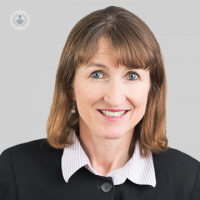Lumps and bumps: types, causes and treatment
Written by:It’s not unusual to encounter lumps and bumps on your skin at some point in your lifetime, but some are more dangerous than others.
We spoke to Dr Deirdre Buckley, a leading consultant dermatologist who is based in Bath, to find out when lumps are potentially dangerous and some of the treatment options available.

What are considered to be lumps and bumps on the skin?
Lumps and bumps on the skin are raised areas which may be the same colour as the skin, or red, purple, blue, brown, black, white or yellow in colour. Some lumps may also have a portion under the skin, when the lump is often referred to as a ‘cyst’ or ‘nodule’.
What are the most common types?
The most common lumps on the skin are moles, dermatofibromas, skin tags, seborrhoeic keratoses, solar keratoses, sebaceous cysts, haemangiomas, pilar cysts, hypertrophic or keloid scars, and warts. All of these are harmless.
What are rarer types of bump on the skin?
Rarer bumps include neurofibromas, leiomyomas, connective tissue naevi, various types of birthmark and various skin cancers.
When should I see a dermatologist?
If your lump is painful, bleeding, changing colour or enlarging (especially if it is new) you should seek the advice of a dermatologist.
What are the possible treatment options?
The dermatology consultant will examine the lump, often using a dermatoscope, a special instrument which allows visualisation of structures under the skin and aids diagnosis. If it is harmless, the dermatologist will advise you that no treatment is needed, although some harmless lesions are removed because of persistent pain, bleeding, or because they are at a site easily traumatised, for example by underwear or clothing elastic.
If the lump needs further examination, a small sample (biopsy) may need to be carried out under local anaesthetic, or the whole lump removed, with stitches to close the wound, leaving a scar. The procedure is normally painless, as modern local anaesthetic is extremely effective.
If biopsy or removal is considered necessary, the procedure will be discussed with you and booked on a convenient date, so you can bring a friend or relative with you if you wish.
Remember that the vast majority of lumps and bumps on the skin are entirely harmless and once you have had your dermatology consultation, you can have peace of mind.
For any other questions you may have, you may like to book an e-Consultation or appointment with a top dermatologist such as Dr Deirdre Buckley, who will be able to offer more medical advice and adequate treatment if necessary.


